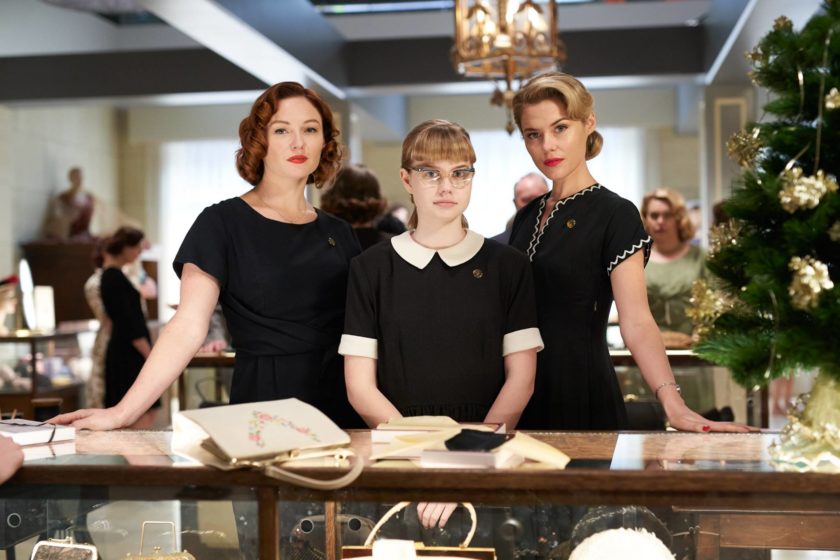
Ladies in Black could have been named “Shopgirl”, but that title was already taken. The film, set over the summer of 1959 in a Department store like David Jones, is a gentle story about some Australian women who are standing on the precipice of change; but often feels like the entrée before the main.
This film was a labour of love for acclaimed director, Bruce Beresford (Driving Miss Daisy). Sue Milliken was Beresford’s co-writer and the story is based on the novel, The Women in Black. The late, Madeleine St John wrote the latter and attended Sydney University with Beresford. You get the sense that this story is like a time capsule about a forgotten period in Sydney’s history.
The film is a slow-burning, coming-of-age story about a girl named Lisa, whose birth name is Lesley (Angourie Rice (The Nice Guys)). Lisa takes a job at a department store called Goodes for the summer. She is biding her time and is eager for her final exam results. She wants to go to university, even though her traditional father (Shane Jacobson at his most ocker) disapproves. While Lesley’s mother (Susie Porter) is more supportive, her opinion doesn’t count, because women had to defer to their husbands at the time.
As the film progresses, the bookish schoolgirl Lesley transforms into a sophisticated young lady named Lisa. This is thanks to the help and friendship of her colleague, Magda. Julia Ormond plays the helpful and vivacious Magda, who is labelled a “continental” on account of her Slovenian heritage. The White Australia policy was still in full-force during the Fifties, and the new European migrants were shaking things up. Thanks to their friendship, Lisa becomes more worldly and leaves her bright-eyed innocence and naivety at the door.
The sub-plots include one about a heartbroken Aussie woman named Fay (Rachael Taylor), who cries that men only want her for one thing. She eventually finds love in the arms of a gorgeous, Hungarian immigrant (Ryan Corr). He is often called a “refo,” which was the slang term used for refugees at the time, though this may not sit well with modern audiences. Meanwhile, Patty (Alison McGirr (Home & Away)) is keen to start a family, but her husband goes missing. Industry legend, Noni Hazlehurst also has a cameo playing the Goodes store manager.
The film has an old-fashioned sensibility, no doubt, because it is a story that is very much one of its time. The world has progressed a lot since then, and the shape of things to come in the Sixties are really only hinted at. In 1959, Australia was very much a parochial nation, and the film is a reflection of that.
Peter James’ cinematography is very handsome, whilst the costumes and settings feel rather authentic. Audiences will enjoy watching the rattling green trams, and seeing a Sydney Harbour decorated by the bridge, but no Opera House. These visual touches help audiences immerse themselves into this small, insulated world of the past.
Ladies in Black is a rather simple story about female friendship. There are no explosions and nobody dies, so perhaps some people may dismiss it, or think that very little happens. In fact, Ladies in Black is a nuanced and optimistic character study about the private lives of a group of shop assistants in the Fifties. The story tackles some big issues: identity, acceptance and sexism, and does so in a light and frothy way. This means you can’t help but think of these white ladies in black sipping pink champagne. How times have changed!
![]()
![]()
![]()
![]()
![]()
THREE STARS (OUT OF FIVE)
Ladies in Black is in cinemas September 20th
